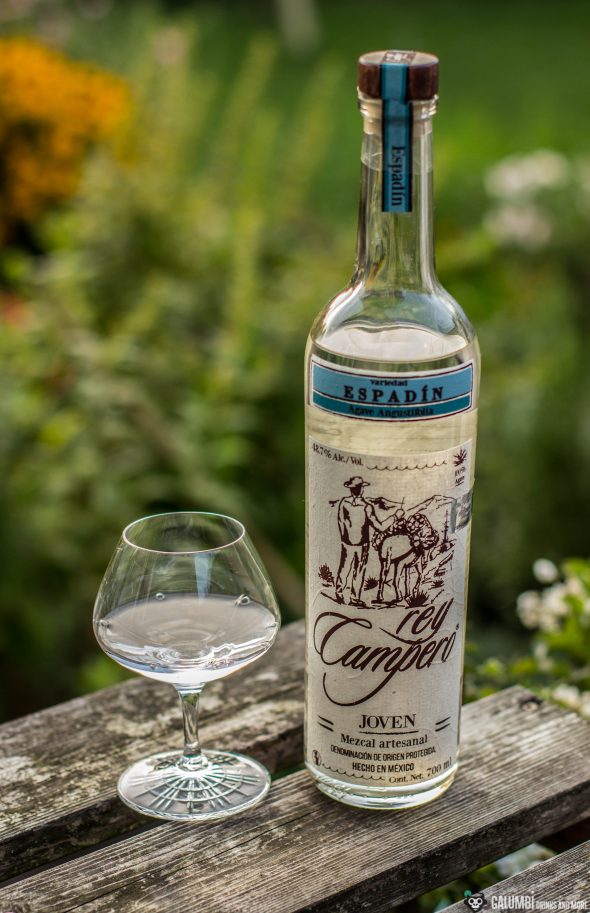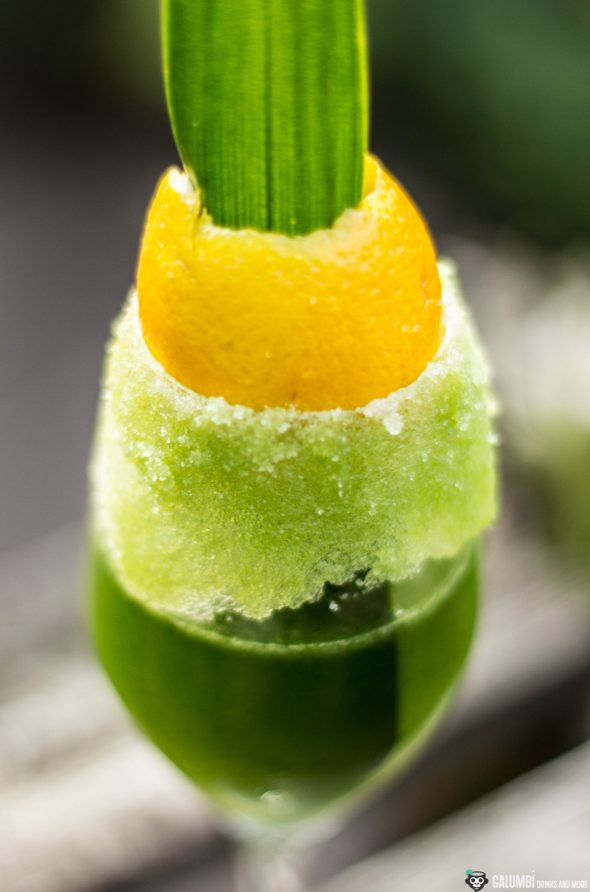
I was really looking forward to today’s article, because I finally have the opportunity to write about a promising Mezcal again. Just to avoid misunderstandings: of course I also appreciate good Tequilas (which in the end are nothing else than Mezcals), but after introducing some of them here lately, I’m looking forward to a little smoky agave flair again. Provided, of course, that today’s bottle delivers what it promises. (provided test product)*
And this bottle is the Rey Campero Joven Mezcal. It comes from the Herencia de Sánchez distillery in the small mountain village of Candelaria Yegole in the Mexican state of Oaxaca and is run by Romulo Sanchez Parada. Rey Campero means as much as “king of the countryside” and is probably an allusion to the agrarian character of mezcal, which is made from agaves. The agaves of the Espadin variety used for this mezcal are allowed to grow for about 6 to 7 years before they are harvested afterwards. I have written so often about the production of Mezcal in this blog that I don’t want to list the individual steps here again. I explained some basic terms a long time ago in an article, which I would like to link here again for this purpose.

The Rey Campero Joven Mezcal is distilled twice on copper stills, before – and this is certainly a special feature worth mentioning here – the agave mash is fermented with wild yeasts. It is therefore left to ferment openly, relying on the more protracted and less precisely controllable effect of free yeasts from the ambient air. Finally, the Mezcal is filled into the bottle with a promising ABV of 48,7% vol.
While doing some research for this Mezcal, I also came across some vague information. For example, it was said on an English site that some batches of the Rey Campero would mature after distillation in glass balloons. On a German site I found the same phrasing, which was obviously a simple translation of the source found before. To what extent this post-maturation in glass containers, which is often done with Mezcal and Tequila, applies to the Joven Mezcal of the brand Rey Campero, I can only guess. On the other hand, I did not find any information on the length of this maturation. Be that as it may, let’s see how the Mezcal performs.

Tasting Notes:
Aroma: You can immediately say that the overall composition is a delightful one! The aroma is very harmonious and balanced, the smoke of the mezcal is by no means too dominant and overlapping, it leaves room for spicy, almost fruity agave notes with white pepper, a floral and herbaceous touch and a hint of lemon peel. I also find light mineral notes, some chalk and associations of crystalline salt.
Taste: Oh yes, the Rey Campero with its 48.7% vol. already offers a very self-confident first impression, immediately brings spicy agave forward with some salt, white pepper, hardly isolatable meadow herbs and a surprising, very beautiful sweetness – I must think of candied lemon peel and Emser salt pastilles (that’s a brand of cough and throat pastilles). Despite the quite expressive first impression, the Rey Campero Joven is not really sharp, the alcohol is even relatively mild.
Finish: spicy, greenish agave notes and a hint of bitter lemon zest
Yes, that’s once again a nice agave distillate, which I can highly recommend for neat enjoyment as well. As far as cocktails are concerned, I wanted to do something extraordinary with it today. And that’s my Pandan Mezcal Crusta. Well, what a crusta is, I already explained a long time ago in the context of the Brandy Crusta (even if I basically should rework parts of that article in the future), so I want to go directly in medias res: You need – no wonder – pandan leaves for this cocktail. But you can easily find them in Asian markets. On the one hand I made a syrup from it (see below) and on the other hand I simply crushed some leaves with sugar in a mortar to get a greenish pandan sugar to create the “Crusta”. Together with fresh lemon and a hint of dry curacao, this drink is a great and unusual framework for the Rey Campero Joven Mezcal because of the fresh, grassy vanilla note and this hint of popcorn that the pandan leaves provide.


Pandan Mezcal Smash recipe:
6 cl Rey Campero Joven Mezcal
1.5 cl pandan syrup (see below)
2 cl lemon juice
2 bar spoons Pierre Ferrand Dry Curacao
2 Dashes By the Dutch Ginger Bitters
Pandan syrup: Combine two handfuls of chopped pandan leaves with 250 ml of water and mix in a blender. Finally filter through a filter cloth and purée the filtered liquid a second time in a blender. Filter again. Now bring the green “pandan water” to the boil in a pan together with sugar at a ratio of 1:1 to a syrup, allow to cool.
Preparation: First, peel half of a lemon in one piece, if possible, so that you get a widely and all around cut lemon peel. Now moisten the slightly pre-cooled glass with some lemon pulp and turn it in a plate with pandan sugar (grind sugar and pandan leaves in a mortar to get it), so that your crusta is formed. Now carefully tuck the lemon zest into the glass so that it sticks and does not fall onto the bottom of the glass. Then shake all the ingredients vigorously on ice and carefully double-strain into the glass without damaging the crusta. Jerry Thomas, in his original instructions to make a crusta, recommends that you smile at this step. It’s best to follow his instructions!
Glass: Crusta (a sour or prosecco glass also works)
Garnish: pandan leaf, pandan sugar as crusta and lemon peel (see above)


Buying sources: At specialized retailers or online
*The fact that these products have been sent to me free of charge for editorial purposes does not – in any way – imply any influence on the content of this article or my rating. On the contrary, it is always an indispensable condition for me to be able to review without any external influence.
